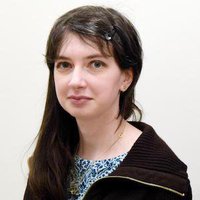By: Ivan Semeniuk Science Reporter - Published August 19, 2022
A subterranean lab where physicists aim to solve the mystery of dark matter and a network of underwater monitoring stations on three coastlines are among the top beneficiaries of a federal fund to bolster large-scale science in Canada.
In total, more than $628-million was awarded on Friday to 19 research-infrastructure projects across the country. The recipients were selected by the Canadian Foundation for Innovation, a federal research-funding agency, as part of a competition to support major science initiatives through 2029.
The funding includes just over $102-million for SNOLAB, the experimental physics facility located in an active mine two kilometres below Sudbury, Ont.
Originally constructed to detect neutrinos from the sun’s core – a result which led to a Nobel prize in 2015 for Canadian physicist Arthur McDonald – the lab is now home to an array of sensitive experiments where it offers shelter from the cosmic rays that continually bombard Earth’s surface.
“Research facilities like this are known around the world, that’s why we’re investing to keep the momentum,” said François-Philippe Champagne, Canada’s Minister of Innovation, Science and Industry, during a news briefing at SNOLAB where he announced the new funding.
One of SNOLAB’s current projects is SuperCDMS, an international experiment funded primarily by the U.S. Department of Energy and National Science Foundation, which will attempt to intercept particles of dark matter as they pass through the Earth.
Because dark matter gives off no light or any other known form of radiation, its existence has so far been deduced only through its gravitational pull on objects in the distant universe. A direct detection of the elusive substance at SNOLAB would amount to a major breakthrough in physics.
After a slowdown of operations during the COVID-19 pandemic, the first components of the SuperCDMS detector are set to arrive at SNOLAB in a matter of weeks. The experiment is currently on schedule to be fully operational in the first half of 2024.
“I do think there’s increasing momentum for SuperCDMS and I’m personally very excited to see colleagues and students starting to come up and spending significant time here,” said Jodi Cooley, an experimental physicist who was named SNOLAB’s new executive director in June.
Dr. Cooley added that the newly announced federal funding would allow SNOLAB to provide planning, operational and technical support for a wide range of current and new experiments at the facility which she called “a resource for the world.”
Miriam Diamond, an assistant professor of physics at the University of Toronto and a member of the SuperCDMS collaboration, welcomes the federal support.
“It’s really huge for us,” Dr. Diamond said. “It tells us that Canada is behind us in our research mission and it’s really carrying on what was started by Art McDonald and the Nobel Prize-winning Sudbury Neutrino Observatory.”
Read the full article here:
https://www.theglobeandmail.com/canada/article-science-infrastructure-funding-canada-announcement/

